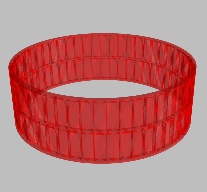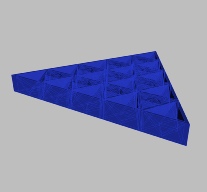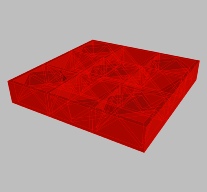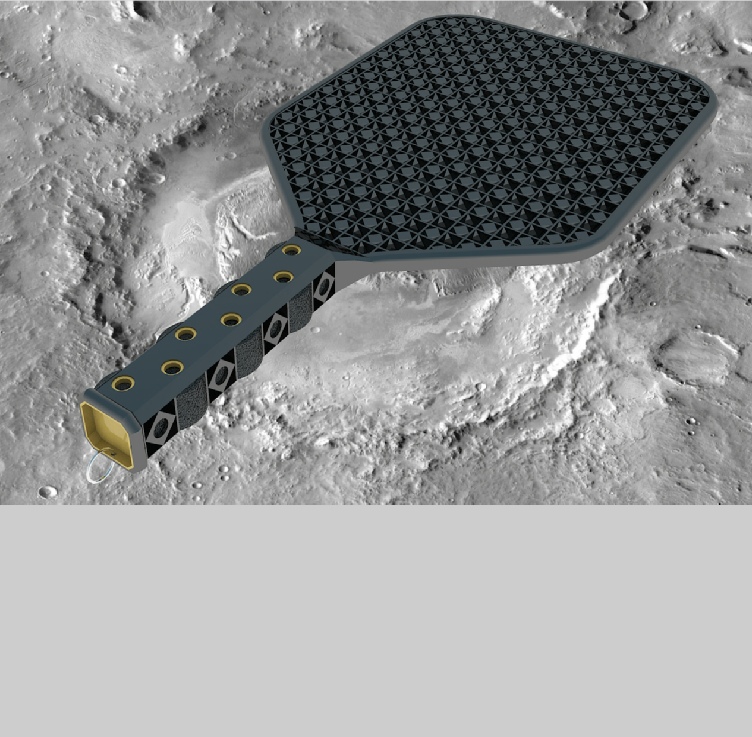
Copyright 2020 Warren L. Herron
TM
The Future is Lighter!
Ultra Strong/Lightweight Panels
For Cost Effective Mass Production
TM
Each Tri-combTM panel is usually composed of identical cells, though different type cells can easily be mixed within a panel if needed for the part geometry. Cells sharing a vertical wall are reversed 180º from each other creating a consistent matrix wherein each cell supports and is supported by all adjacent cells. Each cell is braced internally at all vertical corners and one end resulting in
extreme strength and highly efficient material use.
Designing With Tri-combTM
Tri-combTM can be intimidating at first glance because it appears to be really complicated, but that is very deceptive. It is easy to create diverse panels from a single finished cell using the scale and array commands in any capable CAD software, or you can create macros to do it automatically for you. We have already developed three customizable, Tri-combTM programs that create different types of panels using the Grasshopper® algorithmic programming now included with Rhinoceros®. (Above 3 models were software generated.)
The Square Cell Program, for example, allows users to create finished, valid 3D solid, single cell or flat multi-cell panel drawings in just a few seconds by entering only 5 values of data. Type in the data and it will do the entire panel drawing for you automatically. In addition we now have an Equilateral Triangle Panel Program and a Pipe and Circular Arc Program.
To make a complex profile part, simply break the design profile up into sections, create the individual sections out of square or triangular cells (or both) to match the part geometry, then simply transition or merge the components together. There is absolutely no need to carefully craft every cell. That is the real beauty of a structural matrix. It simply repeats.
There are a few straightforward, basic guidelines that should be considered when designing with Tri-combTM. We have done a LOT of research to learn how the panels behave. We are happy to pass on these insights to licensees. Your designers and engineers can be intelligently and effectively designing with Tri-combTM in a very short time.
Test Results
In June 2017, Stress Engineering Services, Inc.® performed a series of tests on machined 6061 aluminum prototypes using precisely calibrated test equipment. Three prototypes were tested for each test. They were tested for side compression and for flat/top compression. Even though we have done extensive FEA computer simulation testing, we wanted to prove the performance of the structures in the real world. They performed exceedingly well, with the top compression failing at over 350,000 times the weight of the prototypes and the side compression test at nearly 50,000 times the prototype weight. The Square prototypes weighed approximately 1/2 lb and will float in water.
Here are the results of the testing:
Tri-combTM Side and Top Compression Report
Shortly after the June tests, we had Stress Engineering Services, Inc.® perform tests for a Flat Bend Test using the same materials, but longer prototypes. Three prototypes were tested for each test. A top panel of 7075 aluminum was floated (not affixed) on the prototypes to help distribute forces. Had the panel been bonded to the prototypes, these numbers should be much higher, but we wanted to show what could be done without bonding. The samples failed at approximately 1,700 times the weight of the samples. It should be noted that this is essentially a point load situation and no cellular structures perform ideally with such loading.
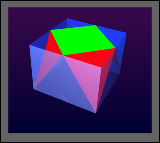
Square
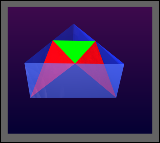
Equilateral Triangle
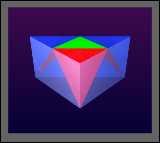
Right Triangle
Three Different Cell Structure Designs:
Each Using The Same Three Basic Components -
Buttress
Corner Brace
Vertical Wall
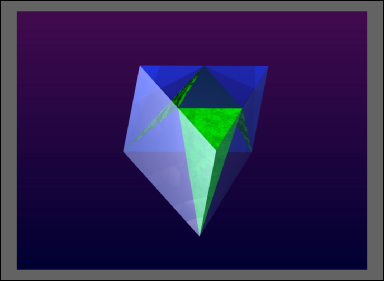
For more information or to set up a meeting to discuss licensing
please email to: warren_herron@tri-comb.com
or contact us.
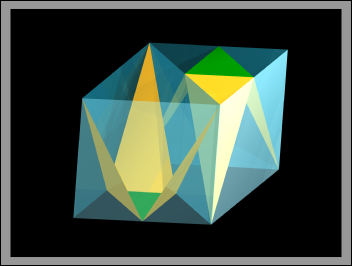
Two Equilateral Triangle Cells in Matrix Orientation
Outside vertical walls are double reinforced by triangle braces. Internal vertical walls are quadruple reinforced. Outside vertical walls have a buttress on one end of all cells. Internal vertical walls have a buttress at each end.
